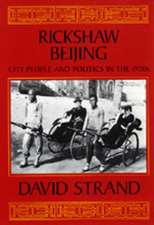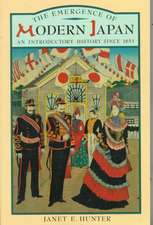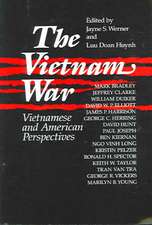Modern China
Autor Edwin E. Moiseen Limba Engleză Paperback – 12 iun 2008
Beginning with the overthrow of the Emperor in 1911, Moise guides us through a century of ever-unfolding drama with characteristic clarity and balance. Examining the effects of the communist revolution, he argues that in the early days Mao Zedong established the most effective government China had ever known, and that even during the bizarre excesses and blood-letting of the Cultural Revolution, there were still issues that were dealt with in a rational and effective manner.
Moving on to the developments since the death of Mao in 1976, in a section fully revised and updated for this new edition, Moise gives a nuanced account of the two sides of China: its spectacularly successful programme of capitalist economic development, and its continuing dictatorship. He contends that dictatorship is now much less total than it was until the mid-70s; although dissenters are still persecuted, their very existence is evidence of a significant loosening of repression. However, there is a heavy price being paid for the Chinese economic miracle. The environmental effects of this boom already stretch well beyond the borders of China.
Modern Chinasends us a clear message: the rapid and fundamental change that has framed the last century has not slowed or stalled but acts as a pointer to the near certainty of significant further change. To understand China’s future we must understand its past.
Edwin E. Moise is Professor of History at Clemson University, South Carolina and a specialist in the history of China and Vietnam. His previous works include Land Reform in China and North Vietnam(1983) and Tonkin Gulf and the Escalation of the Vietnam War (1996).
| Toate formatele și edițiile | Preț | Express |
|---|---|---|
| Paperback (1) | 426.34 lei 6-8 săpt. | |
| Taylor & Francis – 12 iun 2008 | 426.34 lei 6-8 săpt. | |
| Hardback (1) | 1168.40 lei 6-8 săpt. | |
| Taylor & Francis – 9 feb 2015 | 1168.40 lei 6-8 săpt. |
Preț: 426.34 lei
Preț vechi: 501.57 lei
-15% Nou
Puncte Express: 640
Preț estimativ în valută:
81.59€ • 84.87$ • 67.36£
81.59€ • 84.87$ • 67.36£
Carte tipărită la comandă
Livrare economică 14-28 aprilie
Preluare comenzi: 021 569.72.76
Specificații
ISBN-13: 9780582772779
ISBN-10: 058277277X
Pagini: 296
Dimensiuni: 156 x 234 x 19 mm
Greutate: 0.43 kg
Ediția:Revizuită
Editura: Taylor & Francis
Colecția Routledge
Locul publicării:Oxford, United Kingdom
ISBN-10: 058277277X
Pagini: 296
Dimensiuni: 156 x 234 x 19 mm
Greutate: 0.43 kg
Ediția:Revizuită
Editura: Taylor & Francis
Colecția Routledge
Locul publicării:Oxford, United Kingdom
Public țintă
UndergraduateCuprins
List of maps. List of illustrations. Acknowledgements. Introductory note: Chinese names and Chines geography 1. The Chinese Past. 2. The collapse of the old order. 3. The Communist Party and the First United Front. 4. The Nanjing decade, 1927-37. 5. World war and Communist victory. 6. The People's Republic of China, 1949-57. 7. The Great Leap and the great split. 8. The Cultural Revolution. 9. The post-Mao reforms. 10. The era of Deng Xiaoping. 11. The boom years. Suggestions for further reading. Index.
Descriere
The past hundred years in China have seen almost continuous transformation and upheaval. From Confucianist monarchy to warlordism, from fanatically doctrinaire socialist tyranny to almost doctrineless social-capitalism, China has experienced political, cultural and economic disintegration, reunion, and revolution on an unprecedented scale.
Beginning with the overthrow of the Emperor in 1911, Moise guides us through a century of ever-unfolding drama with characteristic clarity and balance.
Modern China sends us a clear message: the rapid and fundamental change that has framed the last century has not slowed or stalled but acts as a pointer to the near certainty of significant further change. To understand China’s future we must understand its past.
Beginning with the overthrow of the Emperor in 1911, Moise guides us through a century of ever-unfolding drama with characteristic clarity and balance.
Modern China sends us a clear message: the rapid and fundamental change that has framed the last century has not slowed or stalled but acts as a pointer to the near certainty of significant further change. To understand China’s future we must understand its past.





















